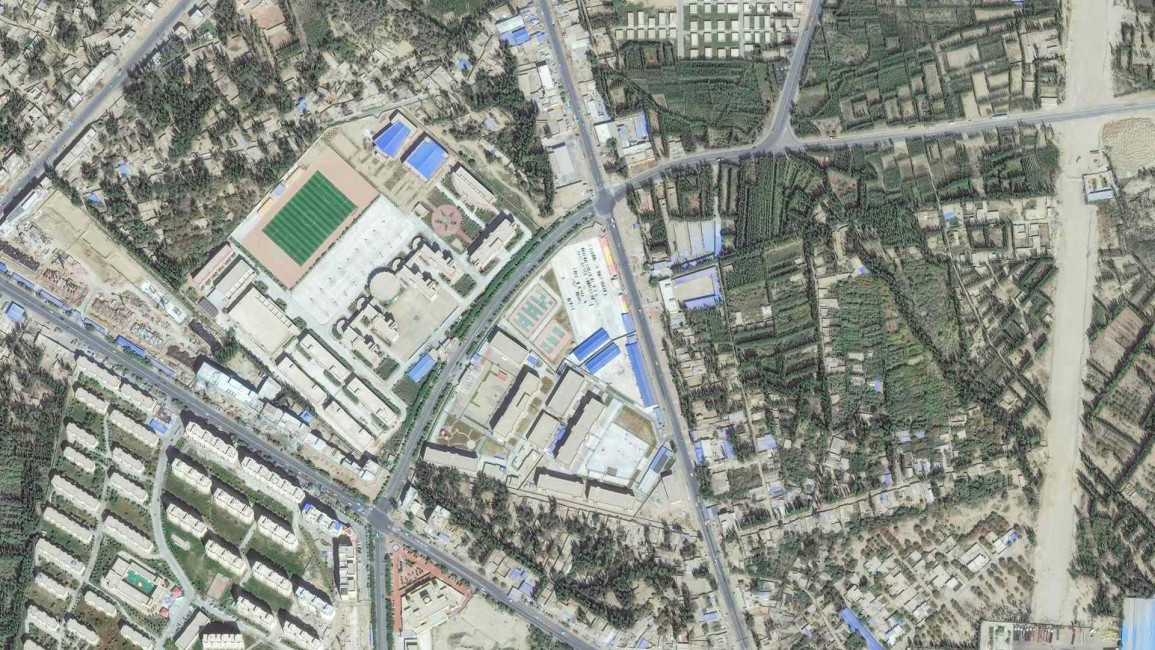Satellite imagery reveals rapid spread of purpose-built detention camps for Muslims in China
Using hundreds of publicly available satellite images from the northwestern Xinjiang region, as well as interviews with former detainees, the report identifies over 260 fortified compounds built since 2017, some that can house tens of thousands of people.
The investigation reveals how the Chinese authorities have moved away from their previous strategy of repurposing public buildings such as schools into prisons, and in recent years has focused instead on constructing permanent, for-purpose high-security detention facilities to accommodate its mass incarceration project.
Over one million Uighurs, Kazakhs and other Muslim minorities are estimated to be detained in China, in what is the largest-scale incarceration of ethnic and religious minorities since World War II.
More than half Xinjiang's population have been put under constant surveillance using facial recognition, phone tracking and checkpoints.
A host of other violations against Muslim minorities has been documented, including mass sterilisation and forced labour.
Twitter Post
|
When the mass internment of Muslims began in 2016, Chinese authorities largely repurposed schools, nursing homes and other public buildings to house the detainees. However as the number of prisoners rocketed, new facilities began being constructed at a rapid rate.
Using historical satellite imaging as well as Baidu Maps, a tool similar to Google Maps, the investigation showed how from 2018, purpose-built facilities with permanent high-security features such as heavy concrete walls and guard towers were being constructed. Some were completed in as little as six months, a fraction of the usual time taken to build similar facilities.
Xinjiang now has 268 newly built facilities, at least one in nearly every county.
Ninety-two of these structures have been verified as detention centre through other sources, while the rest have been identified through satellite imaging alone.
The images reveal heavily fortified walls around the perimeter, many of which contain watchtowers. Often, barbed wire can be seen in the corridors and courtyards.
Satellite images taken during some of the buildings' construction show them to contain many tiny cells.
The government has denied there is systematic detention of Muslims, insisting that its camps are schools and vocational training centres established to "deradicalise" detainees as part of a counter-extremism programme.
However Muslims in the region have been sent to camps for as little as downloading WhatsApp, which is banned in China, communicating with family abroad, praying, and visiting a foreign website.
The government does not class internment camps as part of the criminal justice system, so therefore no one is formally arrested, charged, or put on trial before going to the camps.
Former detainees told Buzzfeed they had experienced torture, hunger, overcrowding, solitary confinement, forced birth control, and other abuses in the camps.
Detainees also said they were fed Communist Party propaganda and forced to only speak Chinese. Some allege they were forced to work unpaid in factories.
Drone footage leaked in September 2019 showed police leading hundreds of blindfolded men with shaved heads and hands shackled behind their backs from a train in what is thought to have been a transfer of inmates between camps that occurred the previous April.
Follow us on Facebook, Twitter and Instagram to stay connected



